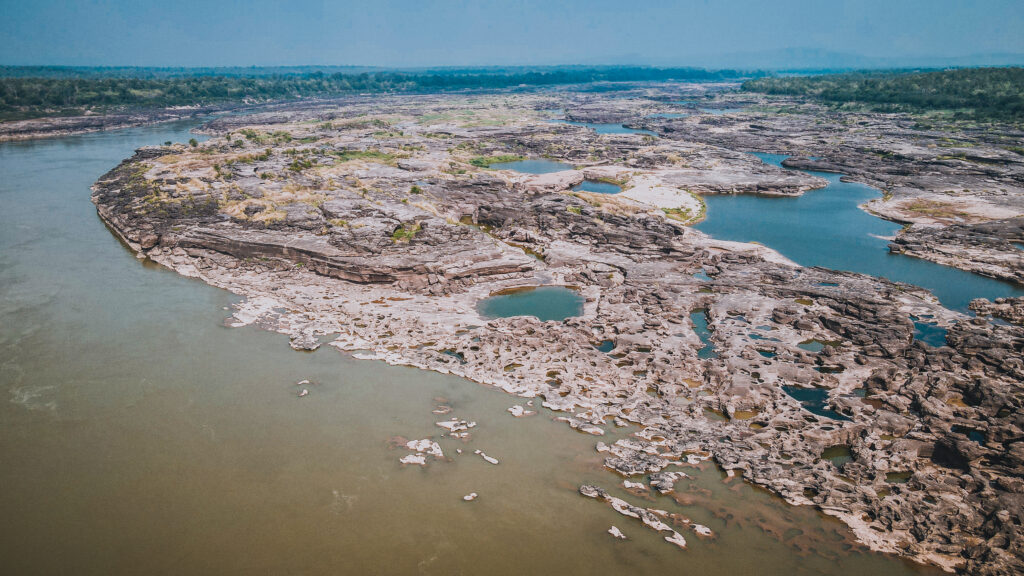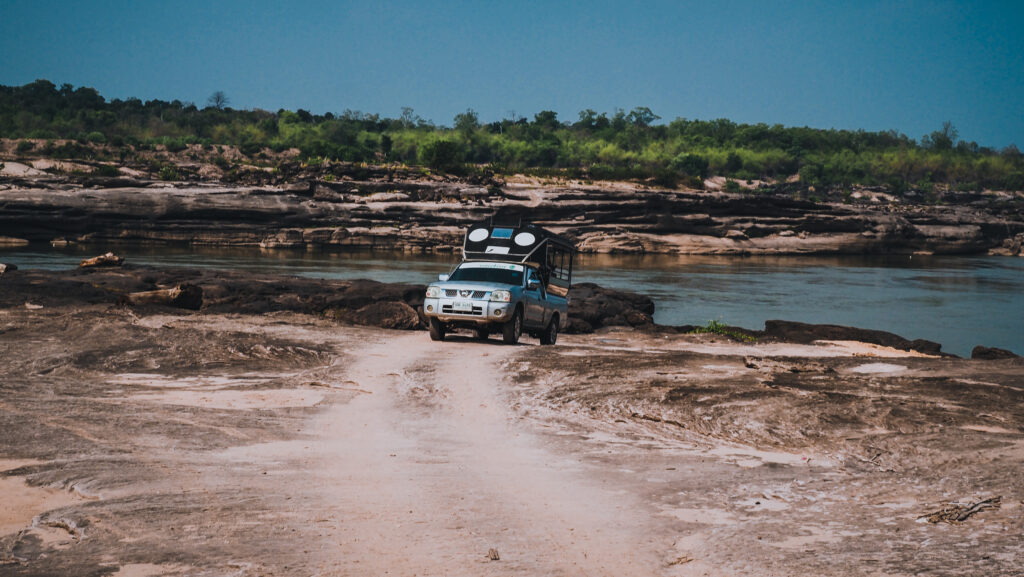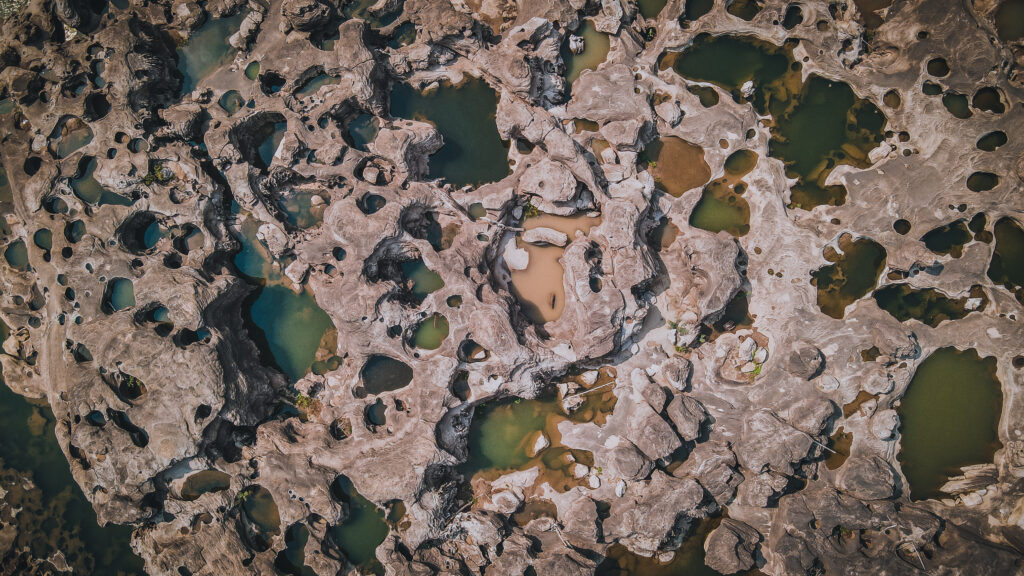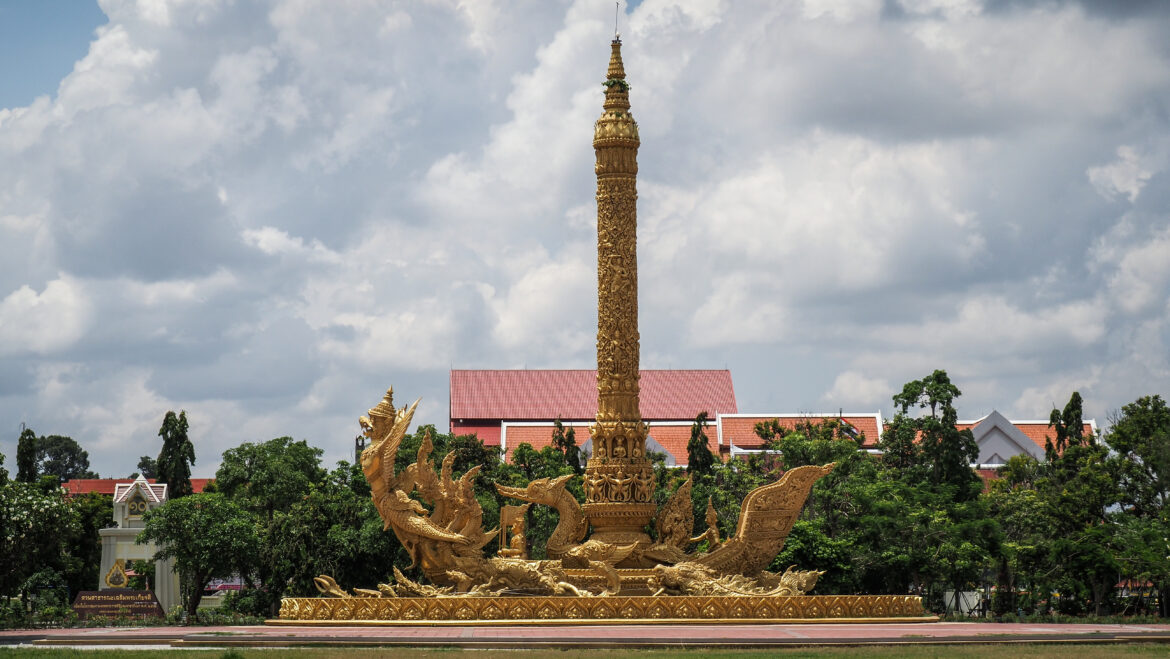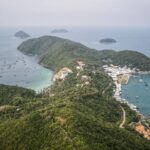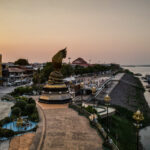Ubon Ratchathani is the largest city in Thailand’s Isan region. The city is located in the Sankamphaeng Range on the Mekong River, which forms the natural border between Thailand and Laos. Ubon Ratchathani is famed for its historic Buddhist temples and the vibrant Thai culture that dominates the city’s lifestyle.
The city dates back to at least the 13th century when it was an important trading port in the Siam Empire. It was founded by King U-Thong who reigned from 1238 to 1270. Ubon Ratchathani was an important center for trade between the East and West, and the city was known for its abundant wealth and culture. As the centuries passed, Ubon Ratchathani grew and prospered. A palace was built in 1791 within the city walls. In the early 20th century, Ubon Ratchathani was declared a province in Thailand, and it developed into an important center of culture and education.
Today, Ubon Ratchathani is best known for its annual candle and lantern festival, which is held in July. During this festival, the people of Ubon light hundreds of floating paper lanterns on the Mekong River. This is a centuries-old tradition and one of the most spectacularly beautiful cultural events in Thailand.
In addition, the city is a great base for those wanting to explore surrounding nature, e.g. Kaeng Tana National Park and Pha Taem National Park.
How to get there?
Ubon Ratchathani can be reached by air, train, or bus from Bangkok. There are daily flights from Bangkok to Ubon which take less than an hour. Train and buses are significantly cheaper but the travel time takes between 9 – 11 hours. My preference is the sleeping train which has the best comfort-to-price ratio but the arrival is very early in the morning, so you will need to hang around the city a few hours before checking in to the hotel.
You may also check your connections at 123Go.Asia
When to go?
The city can be visited at any time of the year. The dry season runs from November to March. During this time, the weather is generally mild, sunny, relatively dry, and with less humidity.
I visited this region in May and unfortunately, it wasn’t the best experience as it was scorching hot and most of the waterfalls dried up.
Where to stay?
I stayed at Phadaeng Hotel and can’t say anything bad about it. It’s nicely located within walking distance of most of the sights, there is a big parking lot and the rooms are clean and spacious.
If you prefer to stay out of town, closer to the Mekong River and national park, I recommend Khong Chiam 2 Hotel in the small town with the same name: Khong Chiam.
What to see?
Wat Phra That Nong Bua
It is one of the most famous and important temples of Ubon Ratchathani Province. The highlight is the gold and white Sri Maha Pho Chedi which was built in 1956 to honor 2500 years of Buddhism and resembles the Mahabodhi stupa in Bodhgaya, India.
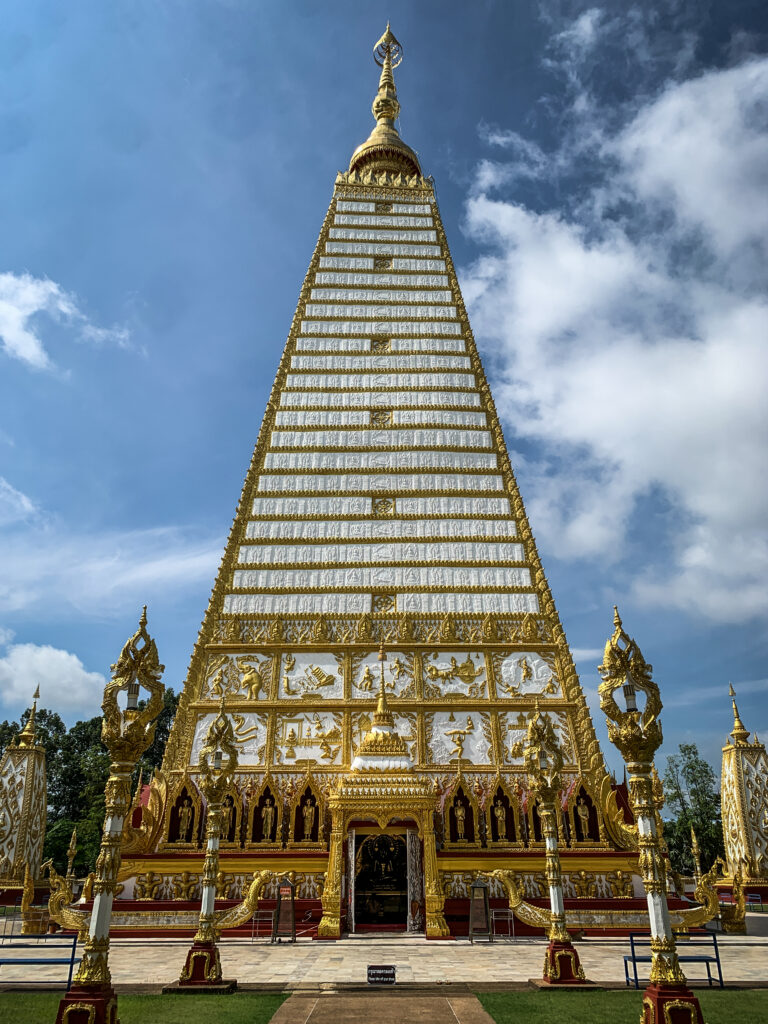

Ubon Ratchathani National Museum
In my opinion, the most interesting museum in the region, with ten exhibition rooms organized around two courtyards. It was built in 1918 in Western Colonial architecture to be used as the City Hall. The museum was opened in 1989. The exhibition presents different historic periods as well as textiles, folk music, handicraft, household utensils, and objects related to Buddhism Everything is well explained in English. The entrance ticket costs 100 THB for foreigners.

Wat Maha Wanaram
The temple was established in 1807 by the second ruler of the city and changed its name to Wat Maha Wanaram in 1941. It’s considered to be the principal temple in Ubon Ratchathani, containing one of the province’s most sacred Buddha images – Phrachao Yai In Paeng. It’s a popular place for locals to come over and make merits.
Wat Thung Si Mueang
The temple was constructed during the reign of King Rama III (1824-1851) to house a replica of Buddha’s footprint. The most photogenic part is Ho Trai, a small wooden hall used to preserve Buddhist scriptures. It was built in the middle of a pond to keep termites and other insects away.
Thung Sri Mueang
Very nice public park with lots of people jogging in the evening. The highlight of the park is a giant candle sculpture. It is 22 meters high and was completed in 2000.
Thung Sri Muang Night Market
Many different kinds of Thai food with multiple tables to sit and eat. There are also quite a few stalls with Vietnamese dishes.
Wat Si Ubon Rattanaram
Quite a big temple just off the main road. It was built in 1855 during the reign of King Rama IV.
Other sights in the region
Wat Nong Pah Pong
One of the area’s best-known forest monasteries was established by the late Ajahn Chah. Before he died in 1992, he established nearly 100 branch monasteries with thousands of followers, including Western monks who set up branches in Europe and elsewhere. On the monastery grounds, apart from the temple and the golden chedi with Ajahn Chah relics, there is also a museum with exhibits including a life-like statue of Ajahn Chah, his robes and other memorabilia, archaeological finds, Buddhist art, and crafts.
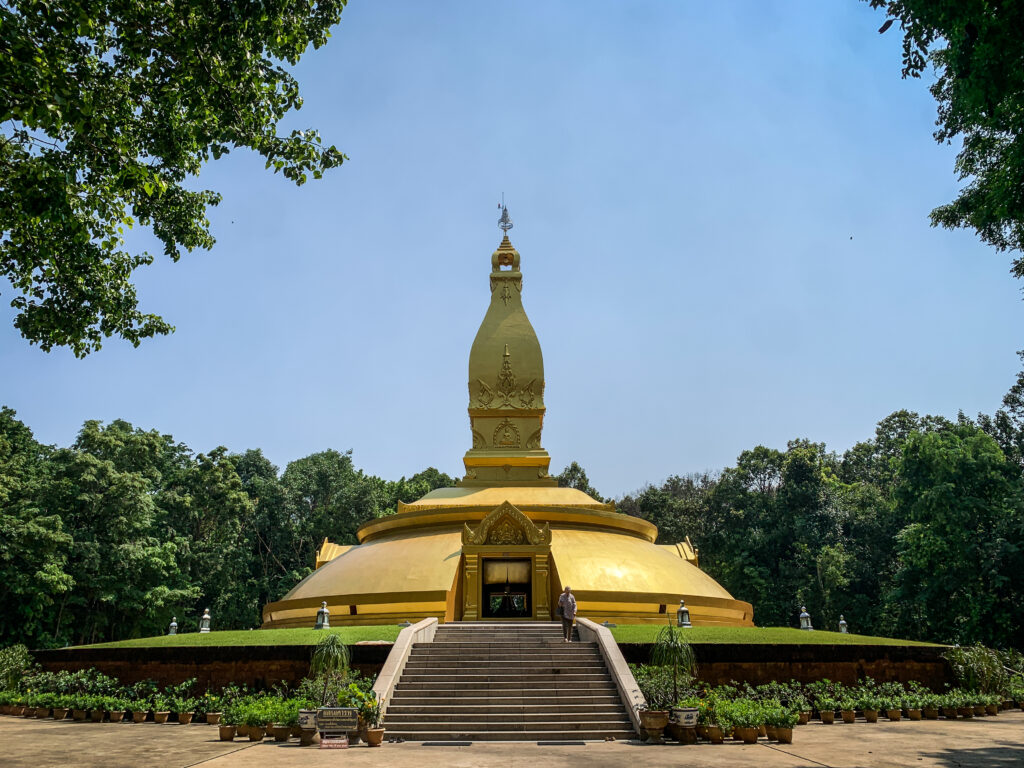
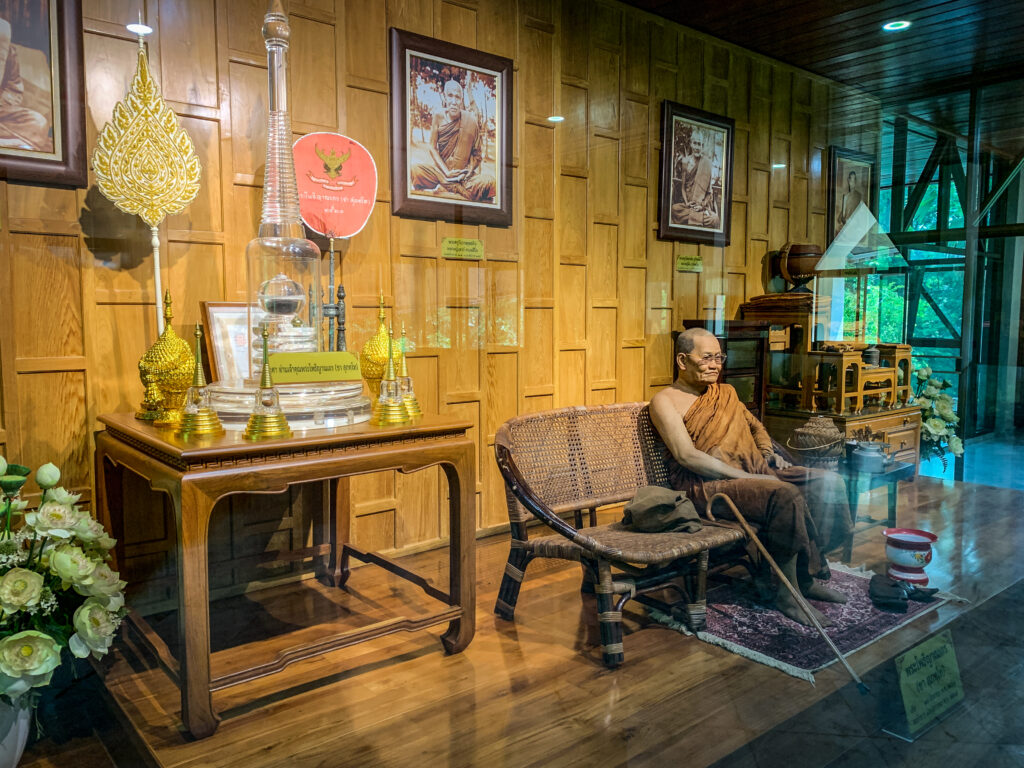
Wat Pah Nanachat
It was established in 1975 by Ajahn Chah as a branch monastery of Wat Nong Pah Pong. An American disciple, Ajahn Sumedho, was invited to lead the community as the first abbot. The monastery aims at providing English-speaking people with the opportunity to train and practice the simple and peaceful lifestyle that the Buddha taught his monks in the forests over 2500 years ago.
Khong Chiam
The main attractions of the town are the two rivers that run through it: the Mun with its blue water and the Mekong which is kind of brownish. You will get the best views from Two-colored River View Point. At the time of my visit in May, I didn’t see much of a difference in color between the two rivers.
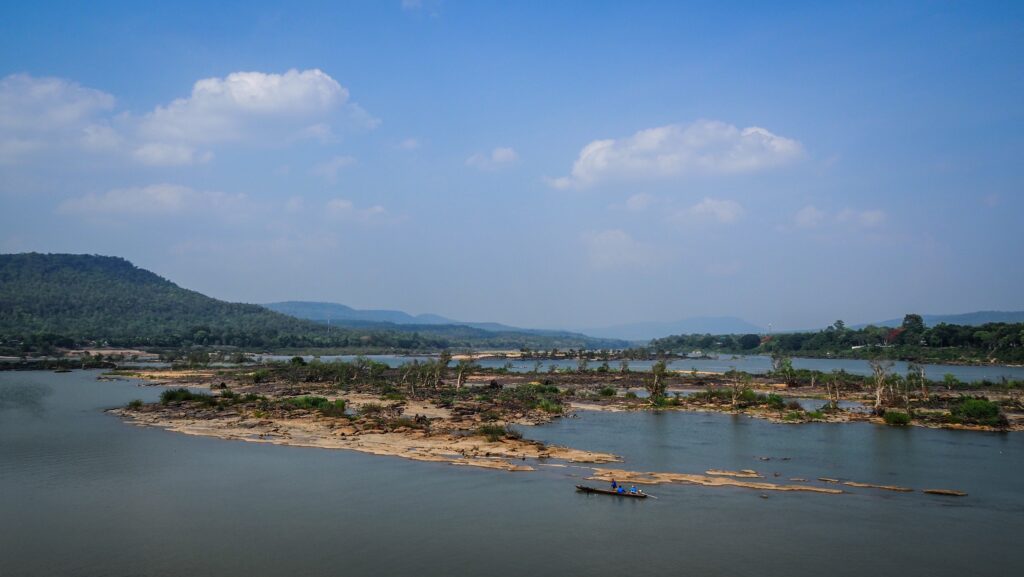
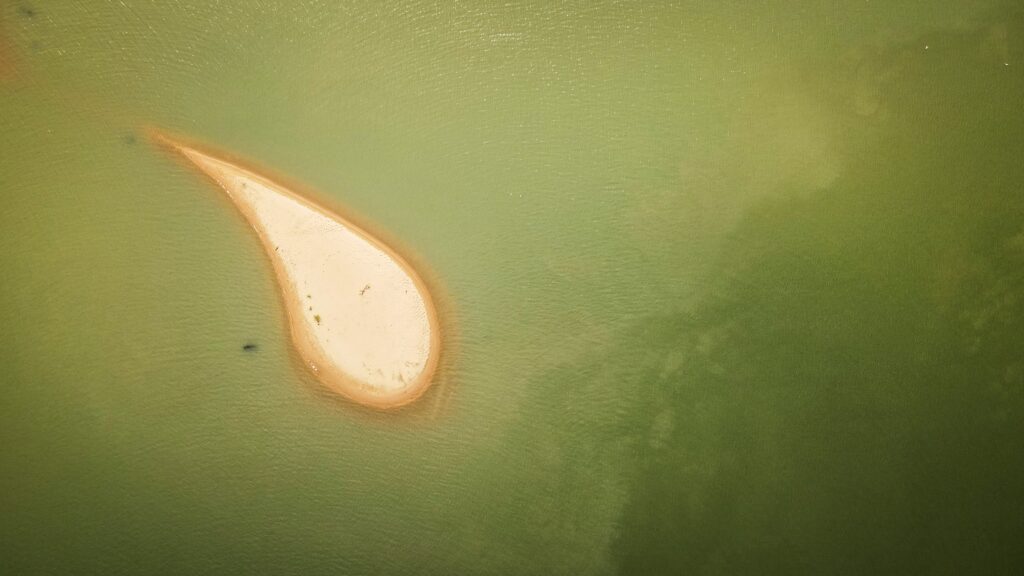
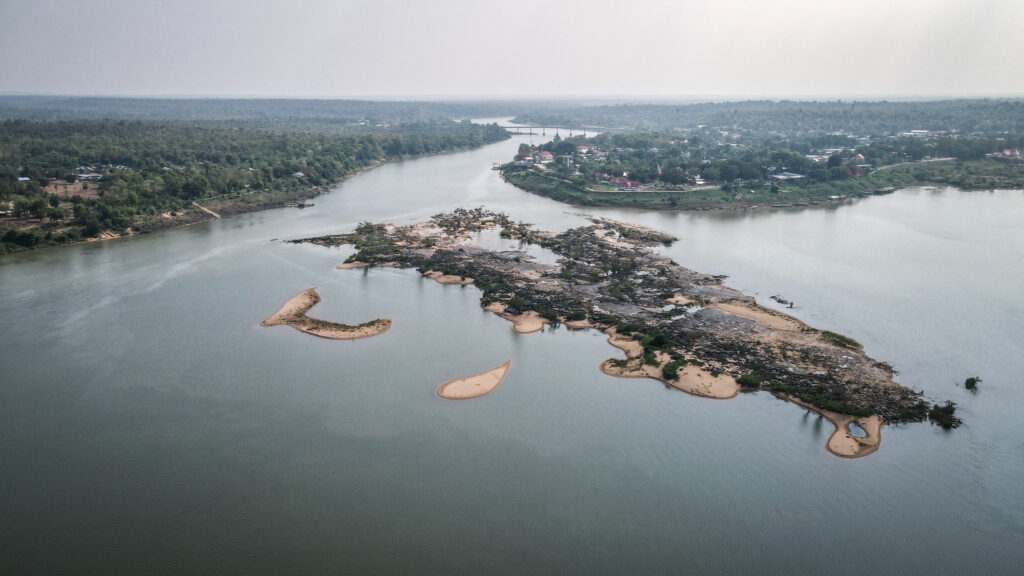
Other than that, you may want to visit Wat Tham Khuha Sawan. There are great views over the Mekong River and Laos. Additionally, you can admire a huge gong. It’s free to visit.
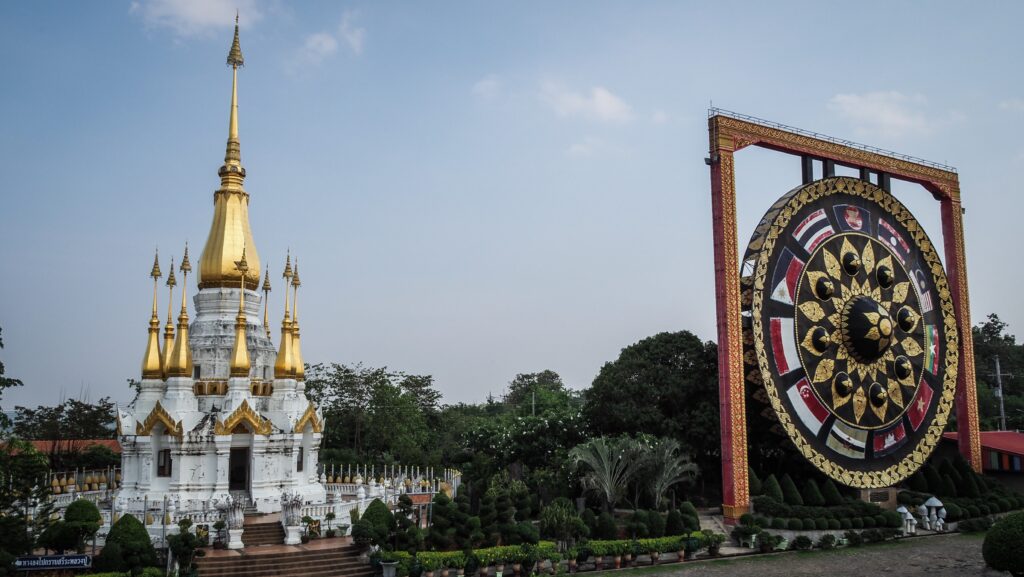
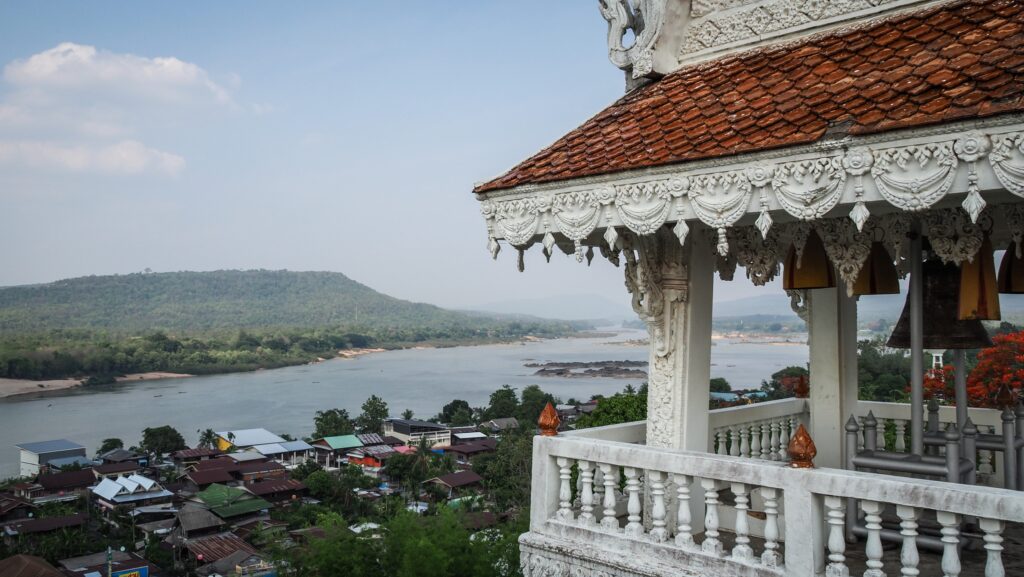
Wat Sirindhorn Wararam
The temple is famous for some elements that glow in the dark, especially the floor outside and the symbol of a tree on one of its walls. The best time to see the lights is shortly before sunset. I arrived when it was already completely dark and the temple didn’t impress me that much.
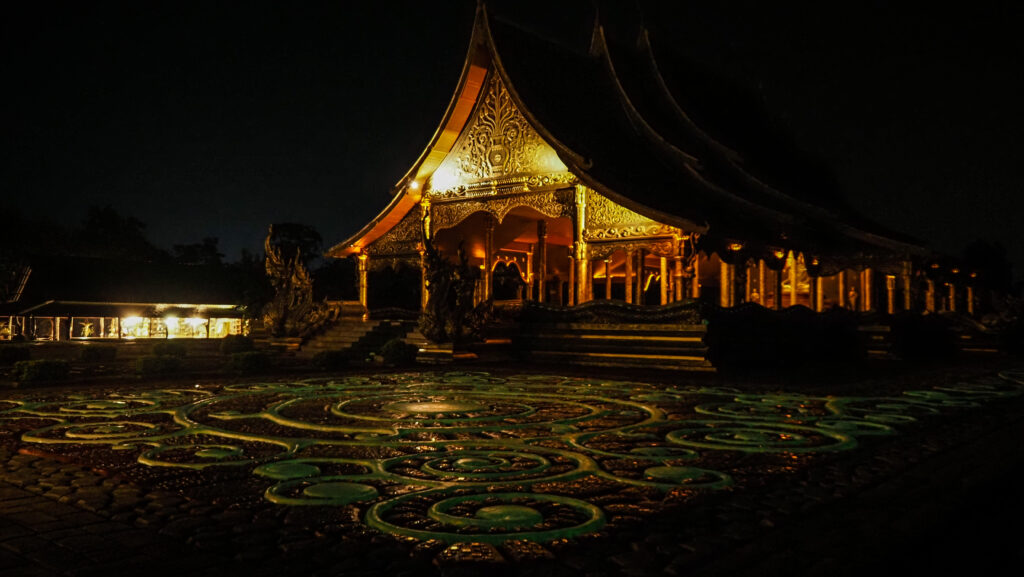
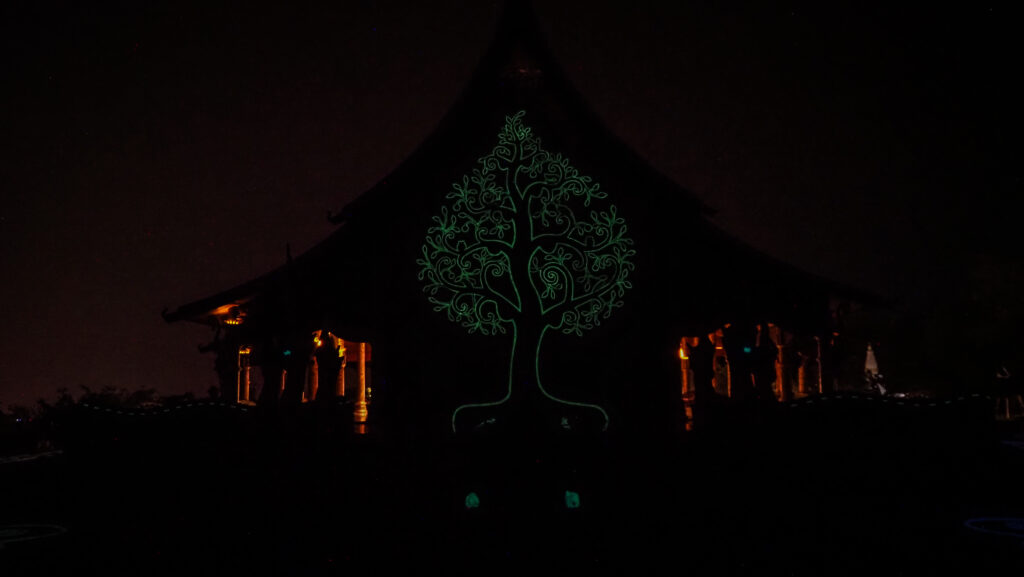
Saen Tor Beach
Huge lake with nice and calm beaches, perfect to relax after a day full of sightseeing. You may spot some water buffaloes around.
Kaeng Tana National Park
I had some trouble finding the entrance, so don’t rely fully on Google Maps. If you are driving on Road 2222, take a turn off towards Pak Mun Dam and then continue into the park.
First I walked over the Kaeng Tana Bridge to Don Tana Island. It’s the longest suspension bridge in the Northeast Region of Thailand. The views were nice but there were armies of insane mosquitos in the forest on the other side of the bridge.
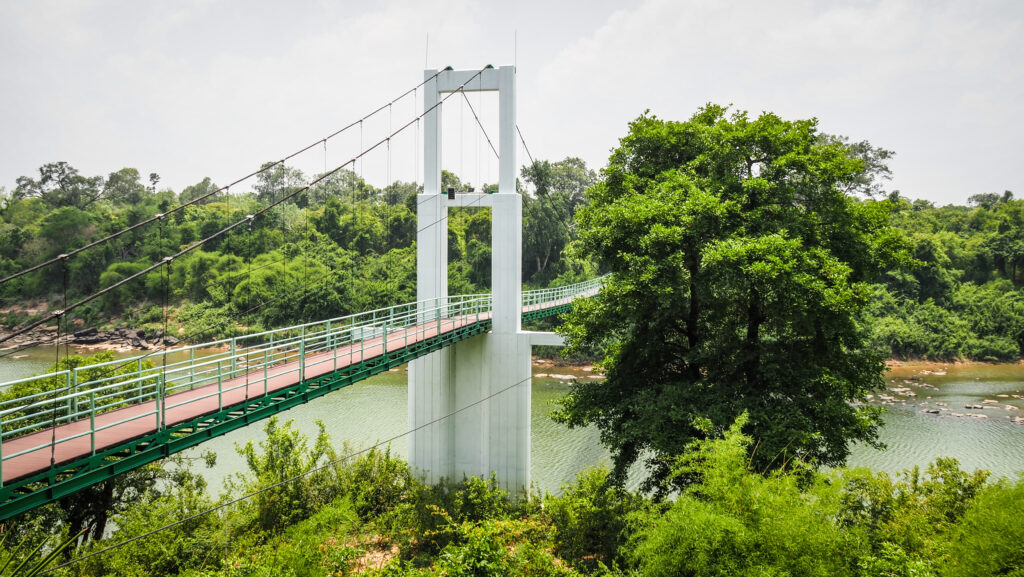
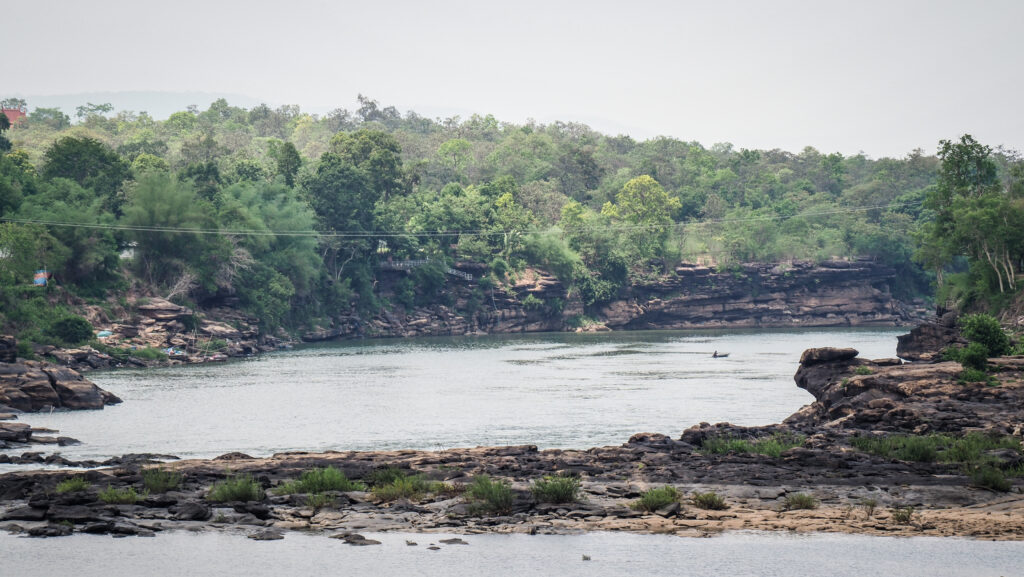
Then, I parked the car next to the Visitor Center and did a short hike to the viewpoint. On the way, there were some signs indicating the cave but it was just a hole in the rock rather than the cave. Luckily, while coming back to the main track, I saw a small snake.
The walk to the viewpoint was on the open savannah-style terrain so it was unbelievably hot. The track was supposed to be a loop but due to lack of hat and poor signage, I decided to come back the same way.
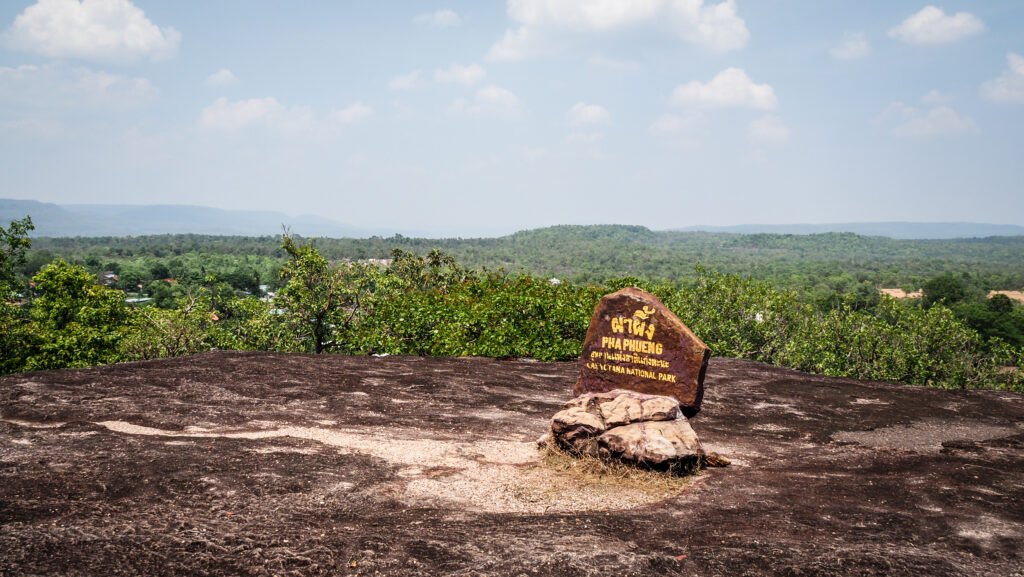

From the parking area, you may also check out a nice viewpoint from which you can see rapids on the Mun River. Be extremely careful when hopping around the huge rocks.
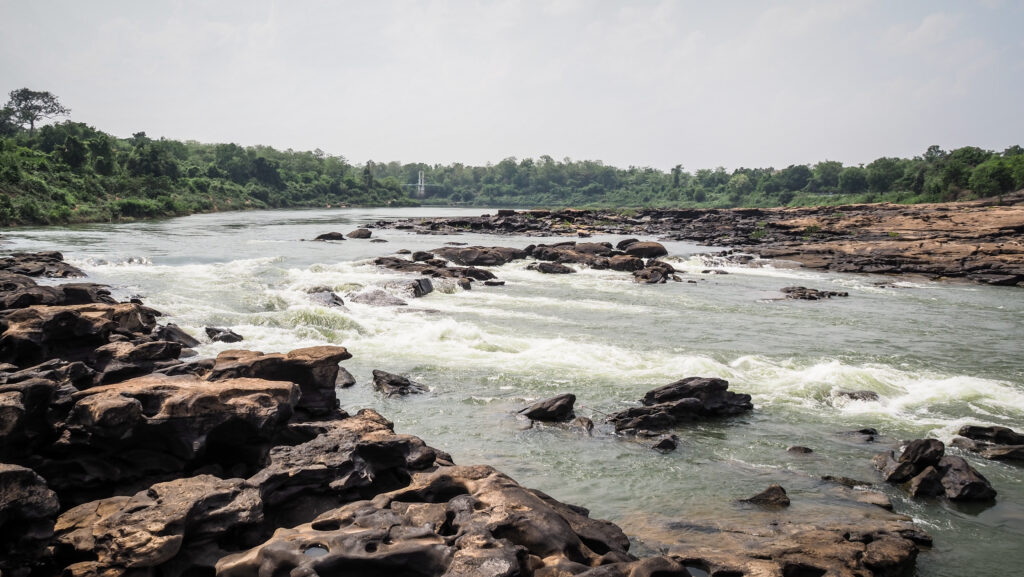
Tat Ton Waterfall is located on the opposite side of Kaen Tana National Park but at the time of my visit (May 2023) it was closed for renovation.
The entrance ticket to the national park for foreigners costs 100 THB.
Pha Taem National Park
One of my favorite national parks in Thailand is located just next to the impressive Mekong River. Pha Taem is named after a large cliff where besides the panoramic views, you can also admire ancient rock paintings. Entry to the park for one day costs 400 THB for foreigners.
The first turn-off when driving from Khong Chiam takes you to Sao Chaliang. It is a natural monolith formed by water and wind erosion that looks like mushrooms. There are visible remains of shells, gravel, and sand in the rock, therefore, it is assumed that about a million years ago, this area used to be the sea. The Meak Mai Sai Than Hin Taek Nature Trail is comprised of 3 pathways. The first trail is 350 meters long, the second one has 1 kilometer and the third one is 2.7 kilometers. I highly recommend doing the longest loop as the views are really beautiful.
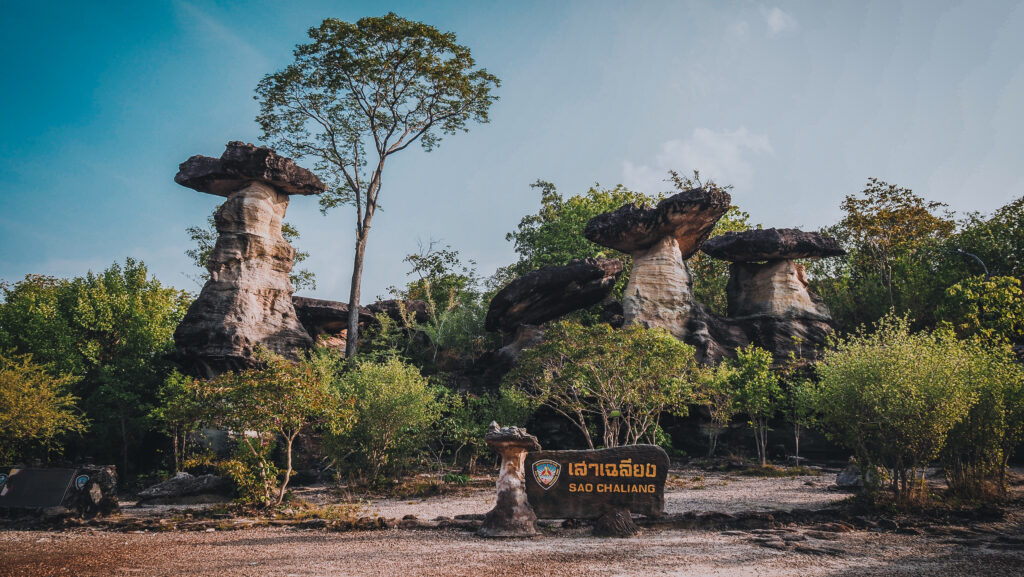
Further down the road is Pha Taem Cliff with incredible views over the Mekong River, a natural border between Thailand and Laos. Due to its geographical location to the east, the area is also known as the best place to experience the first rays of the sun in the country.
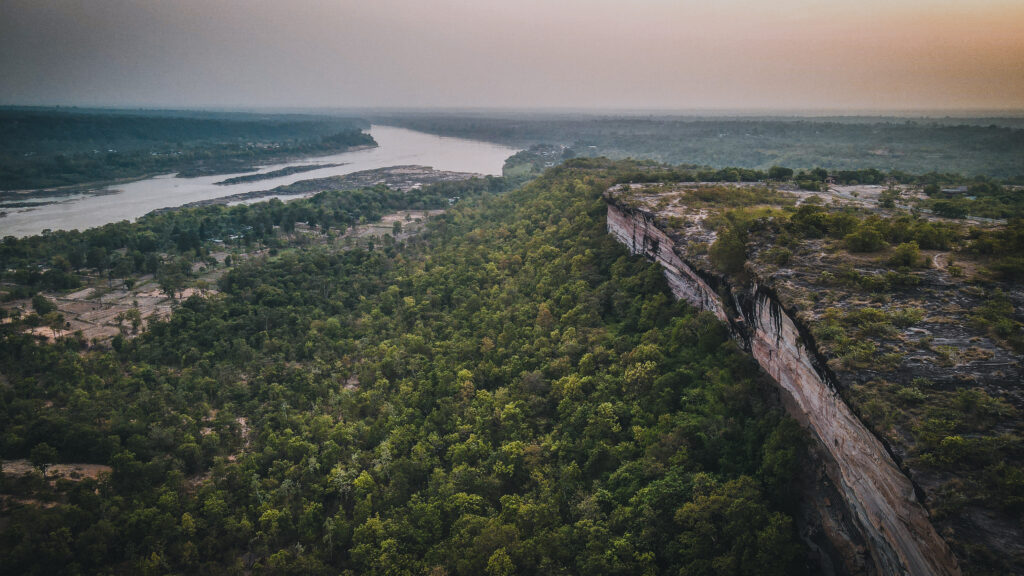
The hiking trail takes you first down the cliff to see ancient prehistoric paintings that were first discovered in 1981. They were made in various styles and techniques and present people, animals (elephant, turtle, catfish, and freshwater stingray), utensils, symbols, and human palms. The paintings are dated to be approximately 3,000 – 2,500 years old. Then you will climb up and return to the parking lot following the path at the top of the cliff. The total distance is nearly 5 kilometres but it is worth it!

Another turn-off from Road 2112 takes you to Soi Sawan Waterfall. From the parking, there is a short walk down to the falls. It was a beautiful sight even though there was very little water in May. From the parking area, you also have the option for a longer hike to Pha Chek Cliff and Pha Moei Cliff. The panorama of the Mekong River from there is simply breathtaking. The distance is about 4.5 km one way which should take 1.5 – 2h to complete.
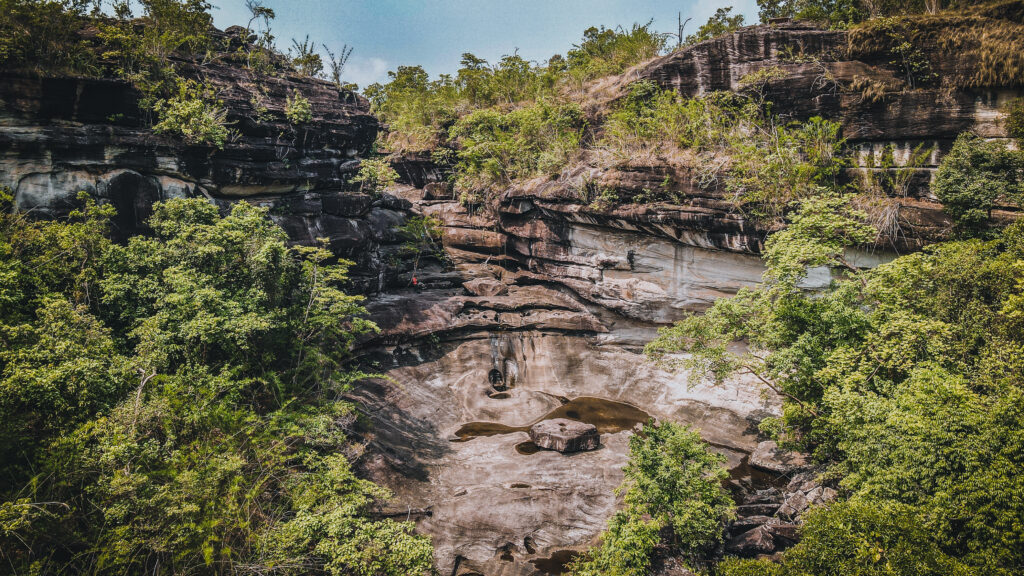
Come back to the main road and continue further north. Saeng Chan Waterfall is another interesting place to stop by and quite unusual because the water runs through the hole in the sandstone rock. Take your time to absorb the atmosphere of this place!

Nearby, there is Thung Na Mueang Waterfall and if you continue following the road along the Mekong River, you will reach its end and the easternmost point of Thailand.
The next two attractions are a bit more difficult to reach. The road up to Pha Chana Dai Cliff is narrow and there are specific times when at which you can go up and down. The schedule as of April 2023 looked as follows:
Time of going up: 04:30 – 06:30, 10:30 – 13:00, 16:00 – 18:00
Time of going down: 07:30 – 09:30, 14:00 -15:00, 19:00 – 19:30
The road seems to be closed during the month of May. Check their website for the most recent information.
The cliff is an easy 10 minutes walk from the car park. Great views over the Mekong and into the mountains of Laos. Consider camping overnight to see the magnificent sunrise! Huai Phok Waterfall is nearby.
On the way to Pha Chana Dai, don’t forget to stop at Twin Pillars which is another sandstone formation shaped like a mushroom. Very photogenic.
Sao Chaliang Yai
Further north, following road 2112, you will notice the turn-off to Sao Chaliang Yai. It is okayish to have a quick look if you have time but there is nothing much except the giant rock pillar, similar to the ones seen in other locations.
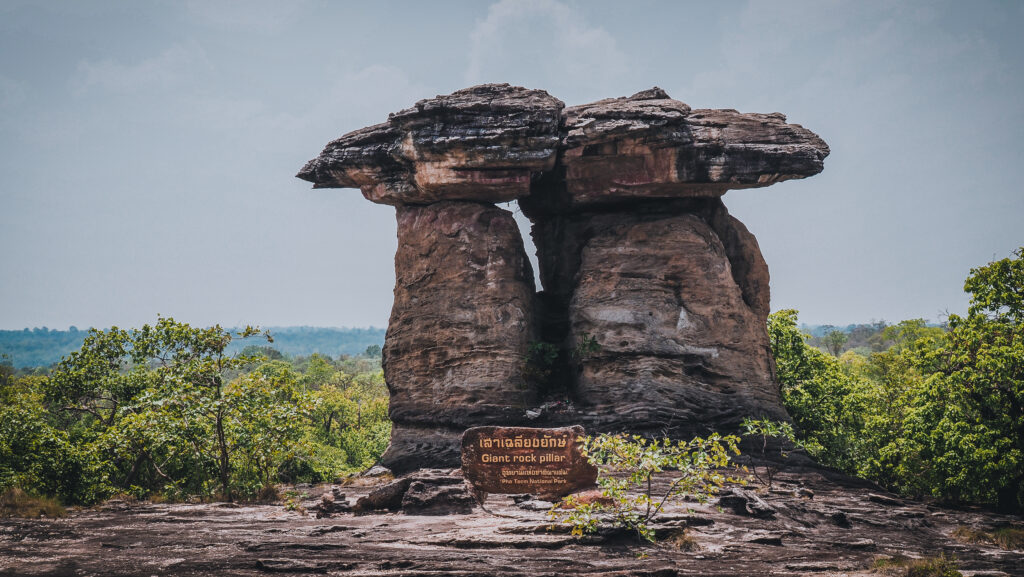

Pha Chan
The cliff on the Mekong River that goes vertically down on both sides of the river is a very impressive and wonderful place. Park your car at the end of the road and walk down to the riverside. Villagers who come to fish in this area have made a wooden ladder to climb down, in case you want to add some adventure vibe to your visit.

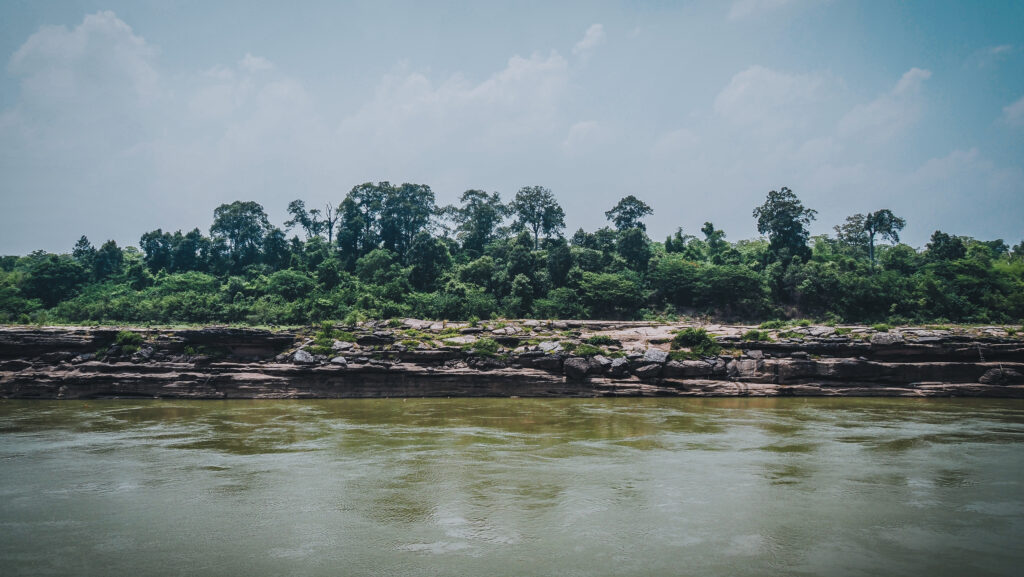
Sam Phan Bok
An excellent landscape with sandstones that have been eroded by the stream of the Mekong River. People also call it the “Grand Canyon of Thailand”. It’s a seasonal attraction so plan your visit in the dry season. Jumping on the back of the pickup truck costs 200 THB per person and I highly recommend it, as walking all the way down on the rocks in that scorching weather can be deadly. You can also hire a guide that will show you some unique rock formations and take pictures of you. More expensive option for exploration includes not only the pickup truck to the Mekong riverbank but also a boat ride.
